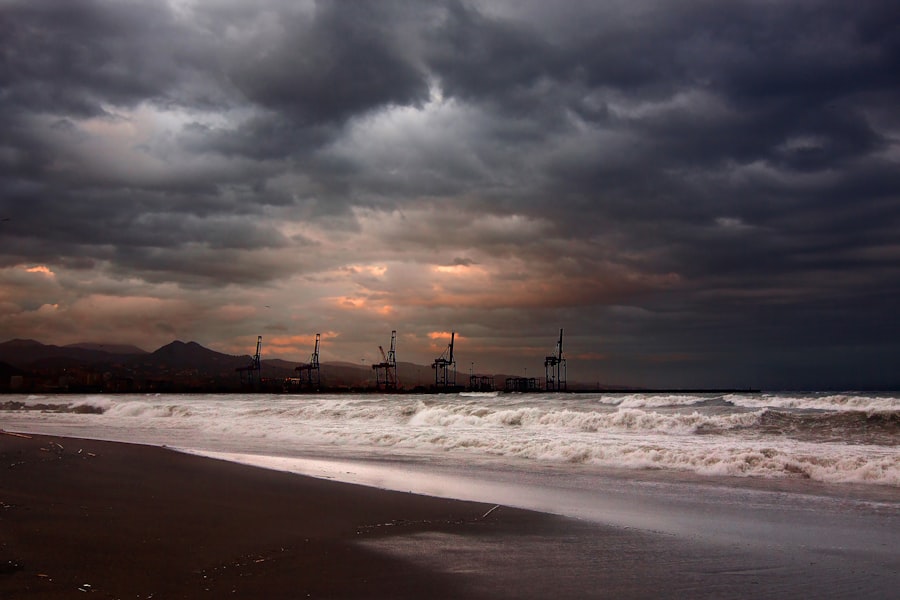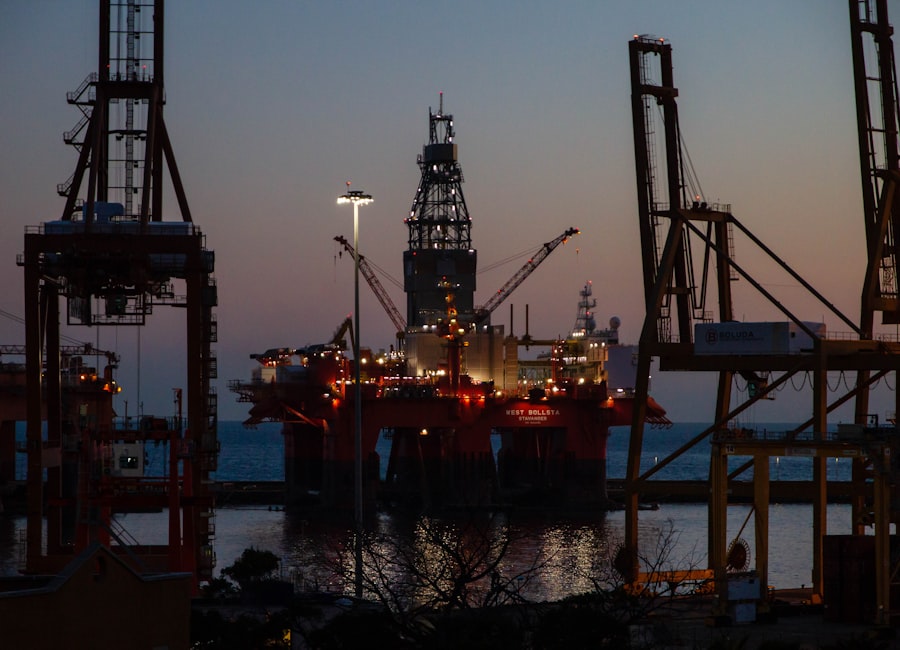The Caspian Sea, often regarded as the world’s largest enclosed inland body of water, occupies a unique position in the geographical and cultural landscape of Eurasia. Spanning approximately 371,000 square kilometres, it is bordered by five countries: Russia, Kazakhstan, Turkmenistan, Iran, and Azerbaijan. This vast expanse of water is not a sea in the traditional sense but rather a lake, albeit one that possesses many characteristics typically associated with marine environments.
The Caspian Sea has been a focal point of human activity for millennia, serving as a critical resource for trade, transportation, and sustenance for the diverse populations that inhabit its shores. Historically, the Caspian Sea has been a crossroads of civilisations, influencing trade routes such as the Silk Road. Its strategic location has made it a significant geopolitical area, with various empires vying for control over its resources and trade routes throughout history.
Today, the Caspian Sea continues to be of immense importance, not only for its natural resources but also for its ecological significance and the cultural heritage of the surrounding nations. Understanding the multifaceted nature of the Caspian Sea requires an exploration of its geographical features, biodiversity, environmental challenges, economic implications, political dynamics, and potential for tourism.
Summary
- The Caspian Sea is the world’s largest inland body of water, bordered by five countries: Russia, Kazakhstan, Turkmenistan, Iran, and Azerbaijan.
- The Caspian Sea is home to a diverse range of flora and fauna, including sturgeon, seals, and over 400 species of invertebrates.
- Environmental issues facing the Caspian Sea include pollution from oil and gas extraction, overfishing, and the introduction of invasive species.
- The Caspian Sea is a significant source of oil and natural gas, with major reserves located in the surrounding countries.
- Political disputes surrounding the Caspian Sea include disagreements over the division of its resources and the legal status of its waters.
Geographical features of the Caspian Sea
The Shoreline and Ecological Niches
This stratification contributes to a variety of ecological niches and influences the types of flora and fauna that can thrive in different areas. The shoreline of the Caspian Sea is equally varied, featuring sandy beaches, rocky cliffs, and marshy wetlands. The northern coast is predominantly flat and marshy, while the southern coast is more rugged and mountainous.
Rivers and Islands
The Volga River, which is Europe’s longest river, flows into the Caspian Sea and serves as a vital source of freshwater. Other significant rivers that feed into this body of water include the Ural River and the Kura River. The interplay between these rivers and the sea creates a dynamic ecosystem that supports a rich diversity of life. Additionally, the Caspian Sea is dotted with numerous islands, some of which are uninhabited and serve as important habitats for various bird species.
Flora and fauna of the Caspian Sea

The biodiversity of the Caspian Sea is remarkable, with a unique assemblage of flora and fauna that has adapted to its specific environmental conditions. The sea is home to over 400 species of fish, including the famous sturgeon, which is renowned for its roe that produces caviar. Sturgeon species such as Beluga, Osetra, and Sevruga are particularly prized in culinary circles and have been harvested for centuries.
However, overfishing and habitat degradation have led to significant declines in sturgeon populations, raising concerns about their long-term survival. In addition to fish, the Caspian Sea supports a variety of aquatic plants, including algae and submerged vegetation that play crucial roles in maintaining water quality and providing habitat for other organisms. The coastal wetlands are rich in biodiversity as well, hosting numerous bird species such as pelicans, herons, and flamingos that rely on these habitats for breeding and feeding.
The unique combination of freshwater inflows from rivers and saline waters from the sea creates a brackish environment that supports a diverse range of life forms. This ecological richness underscores the importance of conservation efforts to protect these habitats from human-induced threats.
Environmental issues facing the Caspian Sea
Despite its ecological significance, the Caspian Sea faces numerous environmental challenges that threaten its health and sustainability. One of the most pressing issues is pollution from industrial activities, agriculture, and urban development along its shores. Oil extraction and transportation have been particularly detrimental to the marine environment.
Oil spills can have catastrophic effects on marine life and coastal ecosystems, leading to long-term damage that can take decades to recover from. Another significant concern is the impact of climate change on the Caspian Sea’s water levels. Fluctuations in precipitation patterns and increased evaporation rates due to rising temperatures have led to both rising and falling water levels over recent decades.
These changes can alter habitats, affect fish populations, and disrupt local economies that depend on fishing and tourism. Additionally, invasive species pose a threat to native biodiversity; species such as the zebra mussel have been introduced into the Caspian Sea through ballast water from ships, leading to competition with native species for resources.
Economic significance of the Caspian Sea
The economic significance of the Caspian Sea cannot be overstated. It serves as a vital source of natural resources for the surrounding countries, particularly in terms of oil and gas reserves. The region is rich in hydrocarbons, with substantial offshore oil fields that have attracted international investment and interest from major energy companies.
The development of these resources has led to economic growth in several countries but has also raised concerns about environmental degradation and social impacts on local communities. Fishing remains an important economic activity in the region as well. The Caspian Sea’s fishery sector provides livelihoods for thousands of people who depend on fishing for their income.
However, overfishing has led to declining fish stocks, prompting calls for sustainable management practices to ensure that this resource can continue to support local economies without compromising ecological integrity. Furthermore, tourism is emerging as an increasingly important economic driver in the region, with visitors drawn to its natural beauty and cultural heritage.
Political disputes surrounding the Caspian Sea

The geopolitical landscape surrounding the Caspian Sea is complex and fraught with tension. The division of its resources has been a contentious issue among the five bordering nations since the dissolution of the Soviet Union in 1991. The lack of a clear legal framework governing territorial waters has led to disputes over maritime boundaries and resource allocation.
In 2018, a landmark agreement was reached among the five countries to delineate their respective rights over the sea’s resources; however, many issues remain unresolved. Disputes over oil and gas reserves have been particularly contentious. Each country seeks to maximise its share of these valuable resources while navigating competing interests and regional dynamics.
Additionally, environmental concerns often intersect with political disputes; countries may prioritise resource extraction over ecological preservation, leading to further tensions among nations that share this vital body of water. The need for cooperative management strategies is paramount to ensure that all parties can benefit from the Caspian Sea’s resources while safeguarding its ecological health.
Tourism and recreational activities in the Caspian Sea region
Tourism around the Caspian Sea has gained traction in recent years as more people discover its unique landscapes and cultural offerings. The region boasts stunning natural beauty, from sandy beaches along its shores to dramatic mountain backdrops in areas like Kazakhstan’s Mangystau region or Iran’s Alborz Mountains. Coastal cities such as Baku in Azerbaijan have become popular destinations due to their vibrant culture, historical sites, and modern amenities.
Recreational activities abound in this region; visitors can engage in water sports such as sailing, jet skiing, and fishing or explore hiking trails that offer breathtaking views of both land and sea. The rich cultural heritage found along the coast adds another layer to tourism; ancient fortresses, traditional villages, and local festivals provide insights into the diverse cultures that have thrived around this body of water for centuries. As infrastructure improves and awareness grows about what the region has to offer, tourism is poised to become an increasingly significant aspect of local economies.
Future prospects for the Caspian Sea
Looking ahead, the future prospects for the Caspian Sea are intertwined with both opportunities and challenges. As global demand for energy continues to rise, there will likely be increased pressure on its natural resources. Balancing economic development with environmental sustainability will be crucial in ensuring that this unique ecosystem remains viable for future generations.
Collaborative efforts among bordering nations will be essential in addressing shared challenges such as pollution control, resource management, and biodiversity conservation. Moreover, climate change will continue to pose significant risks to both human activities and natural ecosystems within the region. Adaptation strategies will need to be developed to mitigate these impacts while promoting resilience among local communities dependent on fishing or tourism.
As awareness grows about environmental issues facing the Caspian Sea, there may be greater impetus for international cooperation aimed at preserving this vital body of water for both its ecological significance and its role in regional economies. In conclusion, while challenges abound regarding environmental degradation and geopolitical tensions surrounding resource allocation persist, there remains hope for a sustainable future for the Caspian Sea through concerted efforts at local, national, and international levels.
FAQs
What is the Caspian Sea?
The Caspian Sea is the world’s largest inland body of water, located between Europe and Asia. It is bordered by five countries: Russia, Kazakhstan, Turkmenistan, Iran, and Azerbaijan.
How big is the Caspian Sea?
The Caspian Sea covers an area of approximately 371,000 square kilometers, making it the largest inland body of water in the world.
Is the Caspian Sea a sea or a lake?
The Caspian Sea is often referred to as a sea due to its size and saltwater, but it is technically a lake as it is not connected to any ocean.
What is the significance of the Caspian Sea?
The Caspian Sea is significant for its rich oil and natural gas reserves, as well as its importance for shipping and fishing industries in the region.
What is the environmental status of the Caspian Sea?
The Caspian Sea faces environmental challenges such as pollution, overfishing, and the impact of oil and gas extraction. Efforts are being made to address these issues and protect the sea’s ecosystem.
What are the major ports on the Caspian Sea?
Major ports on the Caspian Sea include Baku in Azerbaijan, Astrakhan in Russia, and Turkmenbashi in Turkmenistan. These ports play a key role in trade and transportation in the region.


